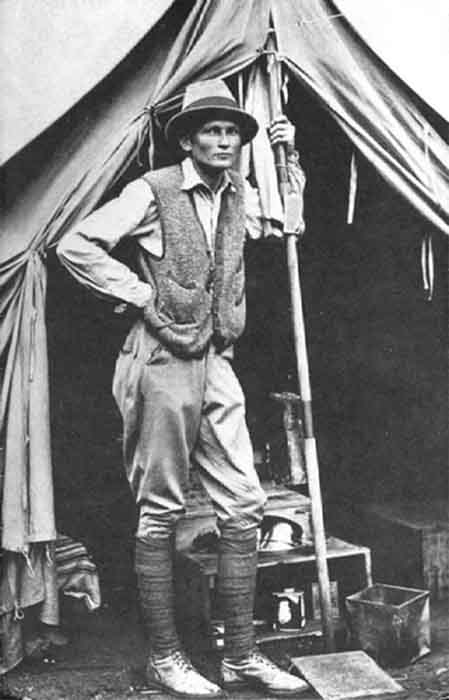Once again, advances in technology have forced archaeologists to change their interpretations of history. A new study published in Antiquity has concluded that the world-renowned Machu Picchu site in Peru was in use more than 20 years earlier than previously thought.
So, What’s the Real Age of Machu Picchu?
One of the top tourist destinations in the world, Machu Picchu in Peru is known not only for its ancient Inca ruins, but for its stunning natural setting. Hiking the Inca Trail has become a pilgrimage for backpackers from all over, so much so that the authorities have had to put strict limits on the number of tourists who can hike the trail per day (500). The ruins itself are visited by about 6,500 people per day, according to BD Destinations .
Although it has become known as the “lost city” discovered by American explorer Hiram Bingham in 1911, in reality it was never “lost” as locals knew it was there all along. What is surprising is that with such a huge influx of visitors, and income, there is still more to be learned about this stunning World Heritage Site, including its age and ancient origins.

The construction of an Indiana Jones-style narrative, in which American explorer Hiram Bingham found the “lost” Inca city of Machu Picchu, has added to its allure. ( Public domain )
Pachacuti and the Founding of Machu Picchu
The legendary story of the Inca ruler Pachacuti has been told and retold for generations, and repeated as part of the tours of Machu Picchu . It is believed that he rose to power thanks to a vision involving Inti, the Sun god, who inspired him to defend the city of Cusco from the Chanca. The first Inca ruler with imperialistic aspirations for an Inca Empire he has been recognized as the creator of “the most powerful empire in pre-Colombian America,” explains an Antiquity press release.
Pachacuti has also been credited with building Machu Picchu , located to the north of Cusco. In fact, the ancient ruins are often described as having been his private estate. The Inca citadel was chosen as one of the Seven Wonders of the Modern World in a contest organized by the New7Wonders Foundation back in 2007, alongside Petra and the Great Wall of China. It was famously built using differently-shaped polished stones which fit together like a jigsaw puzzle to create walls without the use of mortar.

Researchers at Machu Picchu in 1911, shortly before the remains dated in the new study were recovered. ( Yale University )
Applying New Technology to Discover the Age of Machu Picchu
“Determining a site’s archaeological age isn’t always easy,” explained Erin Blakemore in a National Geographic article which gave a simple run-through of the ways in which archaeologists calculate the date of ancient sites. Assessing the age of Machu Picchu is no different.
Richard Burger, a professor from Yale University and the lead author of the paper published in Antiquity explained why the famed Peruvian ruins have been labeled with the incorrect age in the past. “Until now estimates of its antiquity and the length of its occupation were based on contradictory historical accounts written by Spaniards in the period following the Spanish conquest,” he stressed. Remember, the Inca themselves had no written language, apart from a system of knotted cords known as khipu.
A team made up of professionals from several institutions in the United States decided to apply the technique of accelerator mass spectrometry (AMS) in order to more precisely date the human remains which have been exhumed at Machu Picchu. This technology has been successful in dating human remains when minimal organic matter has been left behind.
Most history books state that Machu Picchu was built by Pachacuti in the mid-1400s. Nevertheless, the team used AMS dating technology to date bone and teeth from 26 skeletons found in cave burials which had been excavated back in 1912. Although past attempts had failed to provide consistent results, this new research concluded that Machu Picchu was actually in use from 1420 to 1530 AD.

The construction date of Machu Picchu has now been pushed back thanks to dating technology. (David Stanley / CC BY 2.0 )
Changing the History of the Inca Empire and the Age of Machu Picchu
If this is true, it would mean that the scripted guided tours of Peru’s top tourist destination have been mistaken for decades. If Machu Picchu was in use from 1420, then this would push back the date of Pachacuti’s rise to prominence, as well as the age of the ancient citadel, by at least two decades.
The Antiquity study also puts into sharp relief the importance of continued application of groundbreaking technology to archaeology and ancient history. “The results suggest that the discussion of the development of the Inca empire based primarily on colonial records requires revision,” emphasized Burger.
“Modern radiocarbon methods provide a better foundation for understanding Inca chronology than the contradictory historical records,” explained the lead author of the study. The idea that our understanding of history is versatile and apt to change as technology evolves assures that the study of famous sites like Machu Picchu will continue to be an adventure as we unravel the “lost” reality of the past.
Top image: Experts are reassessing the age of the Peruvian ruins at Machu Picchu. Source: alexpermyakov / Adobe Stock
By Cecilia Bogaard
 RSS Feed
RSS Feed















 August 4th, 2021
August 4th, 2021  Awake Goy
Awake Goy  Posted in
Posted in  Tags:
Tags: 













